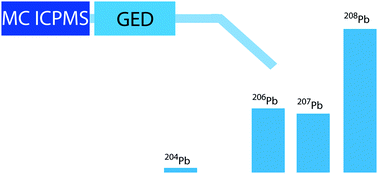Determining isotope ratios using laser ablation sampling in air with MC-ICPMS†
Abstract
Isotope ratio determination in solids sampled in air under atmospheric pressure using

* Corresponding authors
a
ETH Zurich, Department of Chemistry and Applied Biosciences, Laboratory of Inorganic Chemistry, Wolfgang-Pauli-Strasse 10, CH-8093 Zurich, Switzerland
E-mail:
guenther@inorg.chem.ethz.ch
Fax: +41 44-633-1071
b J-SCIENCE LAB Co., Ltd, 3-1, Hiuchigata-cho, Kamitoba, Minami-ku, Kyoto 601-8144, Japan
Isotope ratio determination in solids sampled in air under atmospheric pressure using

 Please wait while we load your content...
Something went wrong. Try again?
Please wait while we load your content...
Something went wrong. Try again?
L. Dorta, R. Kovacs, J. Koch, K. Nishiguchi, K. Utani and D. Günther, J. Anal. At. Spectrom., 2013, 28, 1513 DOI: 10.1039/C3JA50126D
To request permission to reproduce material from this article, please go to the Copyright Clearance Center request page.
If you are an author contributing to an RSC publication, you do not need to request permission provided correct acknowledgement is given.
If you are the author of this article, you do not need to request permission to reproduce figures and diagrams provided correct acknowledgement is given. If you want to reproduce the whole article in a third-party publication (excluding your thesis/dissertation for which permission is not required) please go to the Copyright Clearance Center request page.
Read more about how to correctly acknowledge RSC content.
 Fetching data from CrossRef.
Fetching data from CrossRef.
This may take some time to load.
Loading related content
